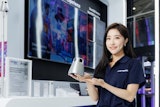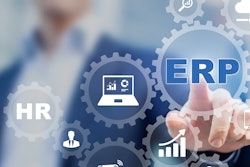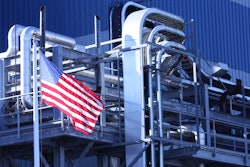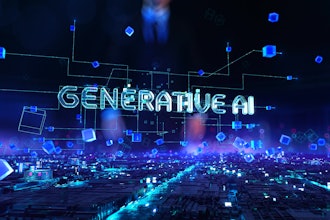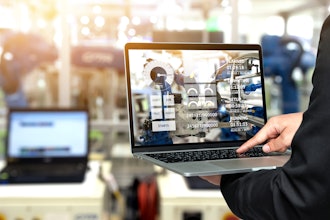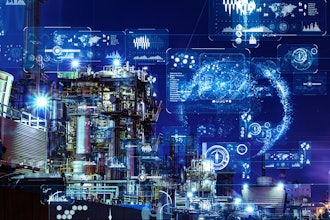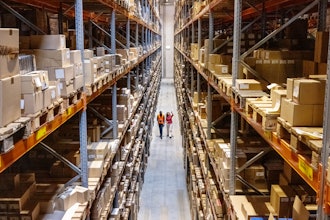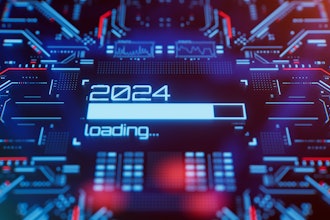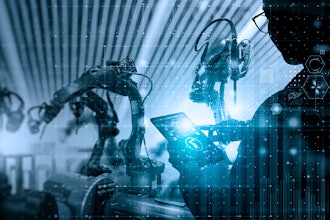Machine-learning algorithms used by remotely connected computers. Autonomous robots with vast libraries of data at their metallic fingertips. “Smart factories” where sensors detect and repair problems before managers are even aware. These are not science-fiction tropes; they’re hallmarks of Industry 4.0.
Enterprise resource planning (ERP) is well-poised to help drive the success of these emerging technologies. Understanding the potential of Industry 4.0 — and how ERP will invariably play a critical role within it — are essential priorities for forward-thinking manufacturers. To quickly adopt the best trends may be the only way to avoid being left in the dust of progress.
Four Ways to Move Forward
Internationally renowned author Bernard Marr, who literally wrote the book on KPIs (among other well-received books on data strategy and analytics), has identified four key characteristics of the emergent revolution known as Industry 4.0.
No. 1 - Interoperability
Every link in the production chain must communicate with the others. This means not only the people at each point but also the machines they monitor and operate. Furthermore, the sensors must continuously share data with one another. The sum of this data must be available on all devices for utility and convenience. User-friendly access for collaboration and mobility is ideal.
No. 2 - Information Transparency
The transparency of information refers to the ability of the system to make data not only accessible but to also provide context. Information transparency improves decision-making by making data about an individual piece or the system as a whole easier to access and analyze.
No. 3 - Technical Assistance
One of the foremost applications of Industry 4.0 is in its ability to assist humans. This support begins with the most obvious interpretation: solving complex problems and supplementing decision-making processes with more data.
Technical assistance will go beyond those terms by optimizing systems to perform tasks that are difficult or unsafe for humans – a hallmark of the new form of industry and a boost for workplace safety, particularly in manufacturing.
No. 4 - Decentralized Decision-Making
Finally, these systems and machines should be decentralized as much as possible. Their ability to help humans make complicated decisions, collate and analyze data, and communicate should all derive from autonomous utility. The merge between cyber and physical industry cannot achieve a revolutionary level of utility unless it can operate without constant monitoring.
New Burdens
Challenges are inherent to any cutting-edge model and Industry 4.0 is no different. Integration between old systems and new systems, or even among multiple new systems, creates vulnerabilities and weak points that hackers and other cybercriminals can exploit. Data security and proprietary knowledge are inexorably tied to the rise of Industry 4.0.
Higher standards for reliability and stability are needed for these new systems, especially as human oversight is reduced. Technical problems that produce costly outages are always concerning, and maintaining production integrity is essential. Finding ways to keep quality and efficiency at peak levels will be vital.
Convincing reluctant stakeholders to adopt new technologies will require addressing these concerns and demonstrating how the benefits of Industry 4.0 easily counterbalance, and indeed outweigh, any negative elements.
The Role of ERP
To unleash Industry 4.0’s potential for smart, efficient, and competitive organizations, manufacturers will need to deliver the shortest possible product run, improve the speed of delivery, trace the product at all steps in the chain, manage that chain, and forecast all of these things with greater accuracy than before. Those are not light tasks to undertake, but ERP is the best solution to meet these challenges. Indeed, ERP has been meeting these kinds of challenges for a long time.
One-Stop ERP
If a manufacturer’s goal is automation of the factory, ERP prepares for it by unifying nearly all business processes. Imagine procurement, purchase orders, material costs, inventory control, business intelligence, planning and projecting, and more all aligned with one another, operated without interference, and continuously re-evaluating the process to scan for errors. This is what cutting-edge ERP provides, eliminating time-wasting, costly, and occasionally dangerous plug-and-play manual operations.
ERP furthermore provides various human-resource management offerings, like payroll and personnel management, and a CRM module. Long-term decision-making is made easier while day-to-day tasks (and their associated costs) are reduced.
As robots and machines continue to automate processes, they will still fail at times in ways that human workers do not. ERP systems can also act as a robotic overseer, to schedule and provide maintenance, analyze output, and modify designs to fit available inventory. One of the beauties of ERP is that it does not remove humans from the equation — instead, it empowers them. Machine uptime and available factory floor space go up while labor costs and anxiety over expenses go down.
ERP + IoT = A-OK
The Internet of Things (IoT), projected to reach heights of 24 billion devices by 2020, adds another wrinkle for Industry 4.0 due to the wide range of devices and technologies involved. The flexibility and modality of ERP systems make them perfect for interpreting the wealth of information provided by all these IoT devices.
ERP can facilitate the interpretation of this nebula of data, with practical results for both manufacturer and consumer. Bills of materials can be updated in real-time based on product-based sensors that send data related to durability, safety, and other necessary parameters. A sensor placed on a product after it leaves the factory can continue to communicate with the ERP system, alerting to a potential maintenance requirement or update, saving the customer service department a load of grief.
While IoT data collection and assimilation is far from a brand-new innovation, the combination of that data and ERP’s muscular capabilities to actively improve manufacturing processes will help define the success of Industry 4.0.
Aaron Continelli is president of Cre8tive Technology and Design.
